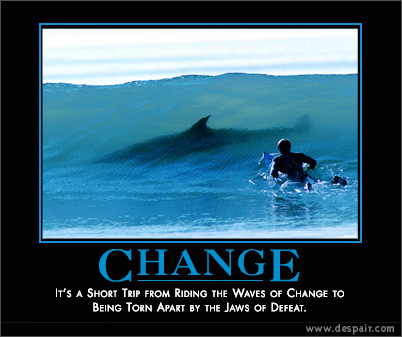Selling Strategy Failure - Why The Rule of 7 Does Not Work Approaching a Prospect and More

The Rule of 7 is a sales concept that is often misunderstood and misused.
Many sales experts recommend the Rule of 7 when it comes to selling. For decades now, this has been advocated by many sales gurus and sales trainers. Of course for the newbie in sales, this can be a very empowering moment. With the rule in mind one gets the motivation to go further in spite the initial failure. That’s sales, you may even add. And the Rule of 7 provides a comfort blanket that shields the beginner and even the veterans from discouraging circumstances. I still need to do more. I still need to create the sale. That’s the right attitude and that’s right mindset.
But after the 7th, the 8th or even the 15th try, there are still no favorable results. What has happened? I’ll tell you what happened - the Rule of 7 did not work for you!
Here's why people fail in sales even when they have the Rule in mind.
Out of sight, Out of mind
Misinterpreting the Rule
Many interpret the Rule of 7 as approaching the prospect at least 7 times to get them to say yes. It is not as simple as that I’m afraid. Though persistence is a valuable asset, it is not entirely what the rule is all about. In a nutshell, the rule is about exposing the prospect to your sales message at least seven times and with the hope that your call to action is answered.
This does not mean calling the person 7 times in a 2-week period and hope that the person buys from you. If you think of it this way then you’re totally off. How would you feel if someone hounds you like this? Yes, it is irritating. Instead of focusing on the benefits and advantages, all will remain is your nagging attitude. So NO, this is not what it means.
Instead of getting slapped with a restraining order, use different avenues to tell your prospect the “good news” about your product. Reinforcing your message in different ways is what is important. You are lucky in that there are many ways to do this. You have the traditional collaterals and printed materials, you have text messaging, e-mail, blogs, websites, even occasional meet ups and a host of other strategies. The import thing is to saturate the person’s conscious and subconscious about the benefits and advantages of the product or service you are selling.
Some may argue that that eventually people will buy because they get embarrassed for not buying after all your efforts. If this is the way you want to sell, then that is truly sad. Don’t sell for the sake of selling! Sell based on the products benefits and how you could help your client.

Wrong Focus
The Rule does not intend for people to push the sale of a product. It is to inform the prospect of how it can benefit them. Sales people often get into the habit of hard selling their product or service without knowing it. Perhaps it’s too much enthusiasm about the product; perhaps it’s just the way they talk. But the bottom line is that consumers don’t want to be pushed into buying. Rather, they want to decide for themselves and purchase at their own time. The Rule understands this. The Rule respects this. That is why you have to provide information not just once but several times – ideally, through different methods.
Here’s the reality – you are not the only one trying push a product. This can get tiring and irritating for the customer.
Focus instead on providing information that they need. Be a consultant not a sales person. Be and expert that they can turn to rather than a person they hide from. Knowing the product/services well, knowing the procedures, knowing how to troubleshoot problems, these are what clients want. Nurture a partnership where they can rely on you for information.
More than just selling, the focus of the Rule of 7 is to enlighten the prospect. If they see the relevance of the product in their lives, they will buy.

Unchanging Methods
They say that when more senses are used the easier it is for the brain to recall. But of course, over-stimulating customers have its draw backs. The key is to have the right strategy and method prepared. Likewise, a variety of styles must be employed. Online marketing, text messaging, printed materials, sales letters, multi-media and others can be used to create informative sales materials. By diversifying your strategies and methods, your sales spiels and tactics become fresh and more attractive. You don’t need to spend much. In fact there are ways to do this without the hefty price tag – we’ll deal with that in the future.
The Rule warrants that you provide fresh perspectives and view points about the product that you are selling. Just imagine saying and showing the same materials over and over. That can be a nightmare – even for you! Don’t strive for the dismal “It’s you again” or “that again” from your prospects. Offer something new for a change.
Apart from the technique, explore a fresh new angle. If you are talking about savings, then why not illustrate how much the person can save in a week’s time, a month or even a year. To make it even more relevant to the person you can tell them what they can buy from all the savings.
The most important part in preparing materials is to keep the client at the center of it all. In the end, they are the ones who will benefit from your product. Remember, it’s about them and the product. It’s not about you and definitely not about selling. OK, it’s a little about making the sale.
Are you running in the right race?

Prospects are NOT QUALIFIED
No matter how many times you approach a person if they are not qualified they will not buy. This is a common mistake that new sales professionals do – even experienced one fall into this trap as well. If this is your niche, then chances are, you can sell. However, if it is not, then don’t get your hopes up.
Can you do a sales presentation to unqualified people? Of course you can. No one is stopping you. But to put too much effort into something that you know will not pan out to be fruitful is illogical. The “who knows” and “what if” factors are there but to fully invest your resources with them is not a wise move. Spend your time with qualified prospects than trying to convince others to become part of a niche that they don't belong.
Many say that sales is a race to get the prospect to buy from you. But think for a moment. Are you running in the right race? Even if you get ahead of others, the wrong prospect might be at the end of the line.
More than just a sales technique, the Rule of 7 is a sales philosophy about how to sell properly. Moreover, it is not an excuse for not being able to close a sale. Now that you know where most sales people go wrong. Rethink your strategies and close that sale once and for all.









